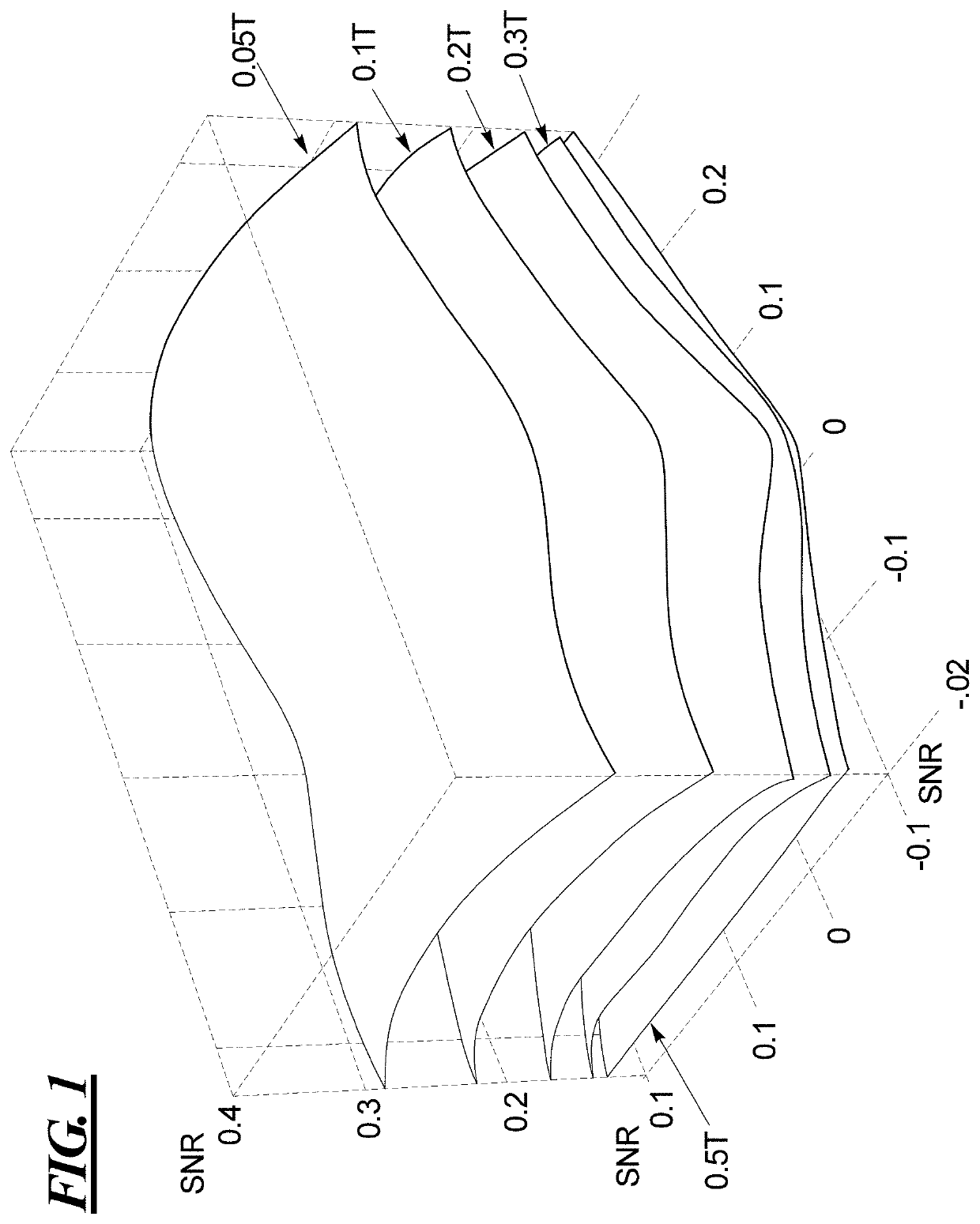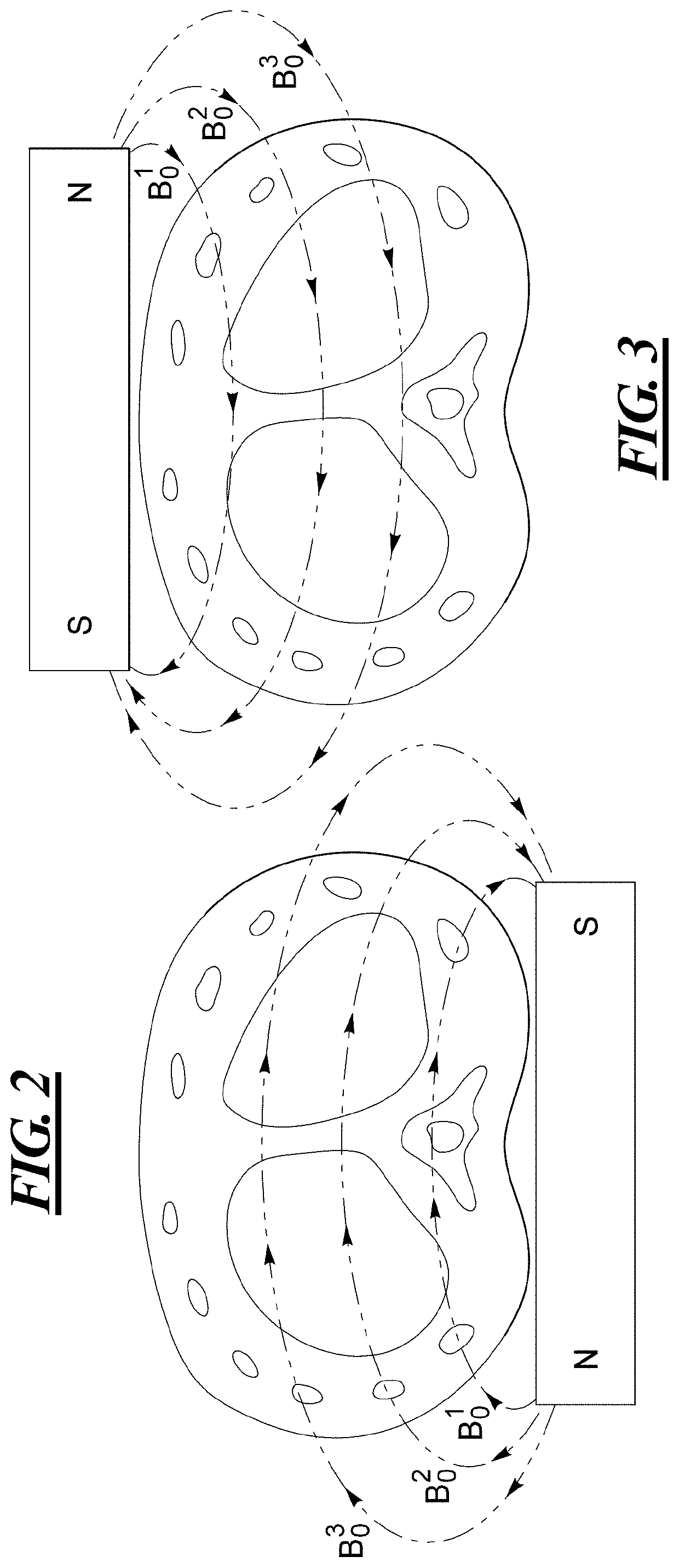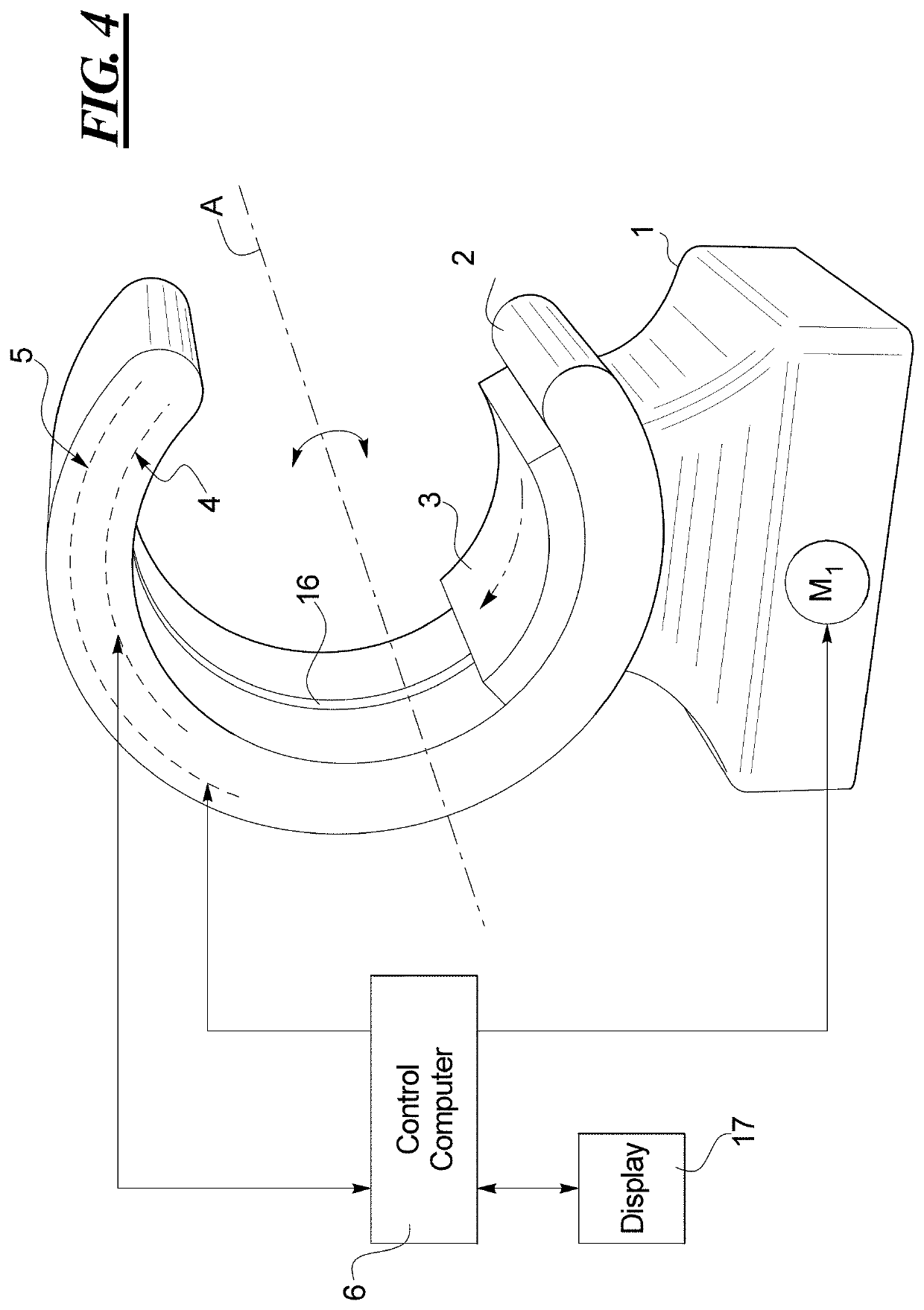Resonance data acquisition scanner with rotating basic field magnet
a magnetic resonance imaging and scanner technology, applied in the field of magnetic resonance imaging methods and apparatuses, can solve the problems of preventing the physicians treating such patients from being able to take advantage of higher quality imaging, not even having the option of examining a claustrophobic patient with an open mr scanner, etc., to achieve good snr and reduce claustrophobic anxiety.
- Summary
- Abstract
- Description
- Claims
- Application Information
AI Technical Summary
Benefits of technology
Problems solved by technology
Method used
Image
Examples
Embodiment Construction
[0023]FIGS. 2 and 3 illustrate the basic concept of the MR scanner according to the invention, by showing the basic field magnet in respective positions above and below a cross-section of a patient's torso. The basic field magnet can be a permanent magnet, but is preferably an electromagnet, so that the polarity thereof can be selectively changed, as is the case between FIG. 2 and FIG. 3.
[0024]As can be seen in FIGS. 2 and 3, the basic field magnet produces a basic magnetic field in the torso, with field strengths at the respective fields lines designated as B03, B02 and B01. These different field strengths respectively result in MR signals being acquired with different SNRs, with the SNR for B01 being highest and the SNR for B03 being lowest, because the field strengths decrease with increasing distance from the basic field magnet.
[0025]FIG. 4 is a perspective view of the basic components of an MR scanner according to the present invention. The MR scanner itself has a base 1, on wh...
PUM
 Login to View More
Login to View More Abstract
Description
Claims
Application Information
 Login to View More
Login to View More - R&D
- Intellectual Property
- Life Sciences
- Materials
- Tech Scout
- Unparalleled Data Quality
- Higher Quality Content
- 60% Fewer Hallucinations
Browse by: Latest US Patents, China's latest patents, Technical Efficacy Thesaurus, Application Domain, Technology Topic, Popular Technical Reports.
© 2025 PatSnap. All rights reserved.Legal|Privacy policy|Modern Slavery Act Transparency Statement|Sitemap|About US| Contact US: help@patsnap.com



